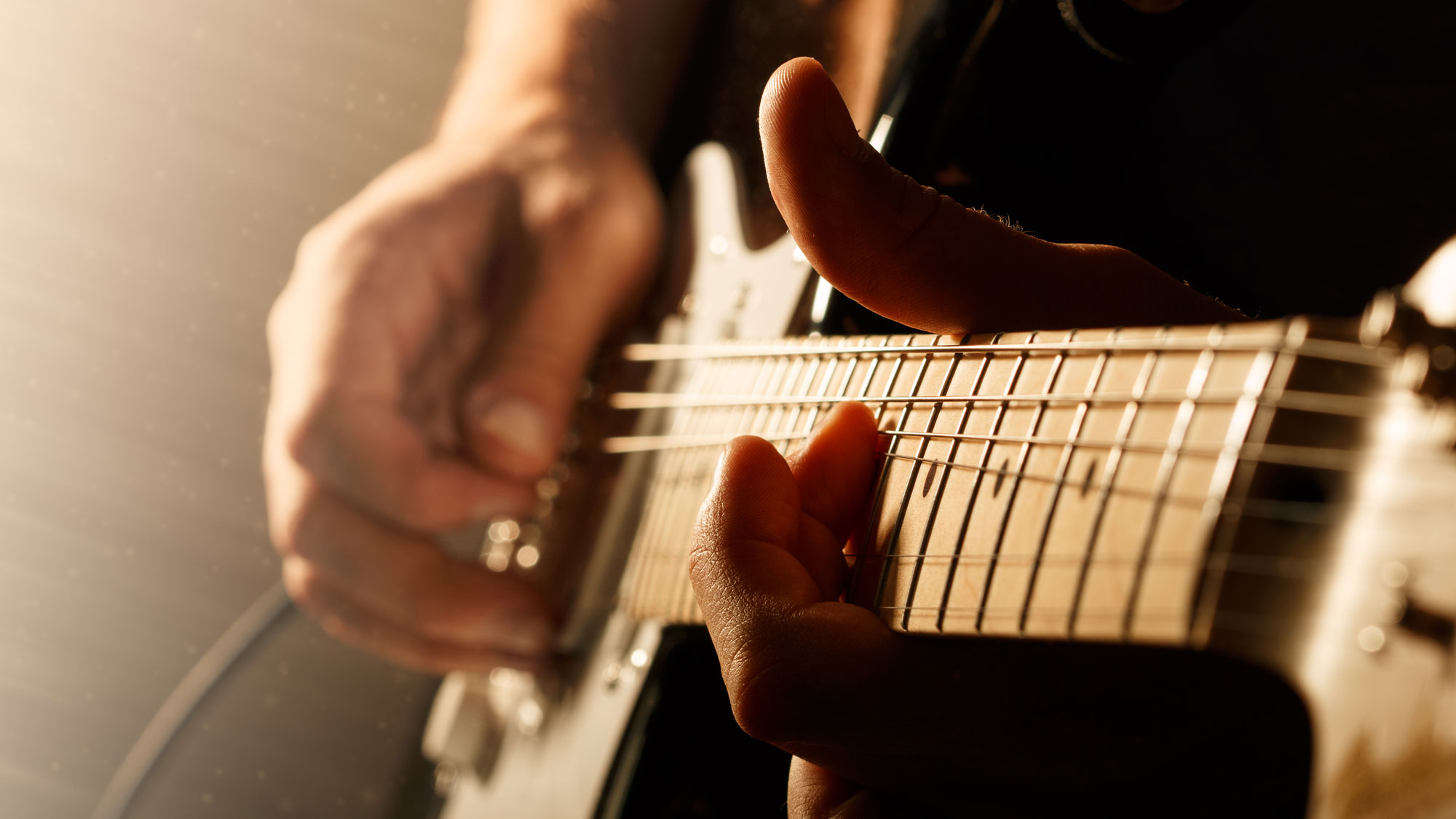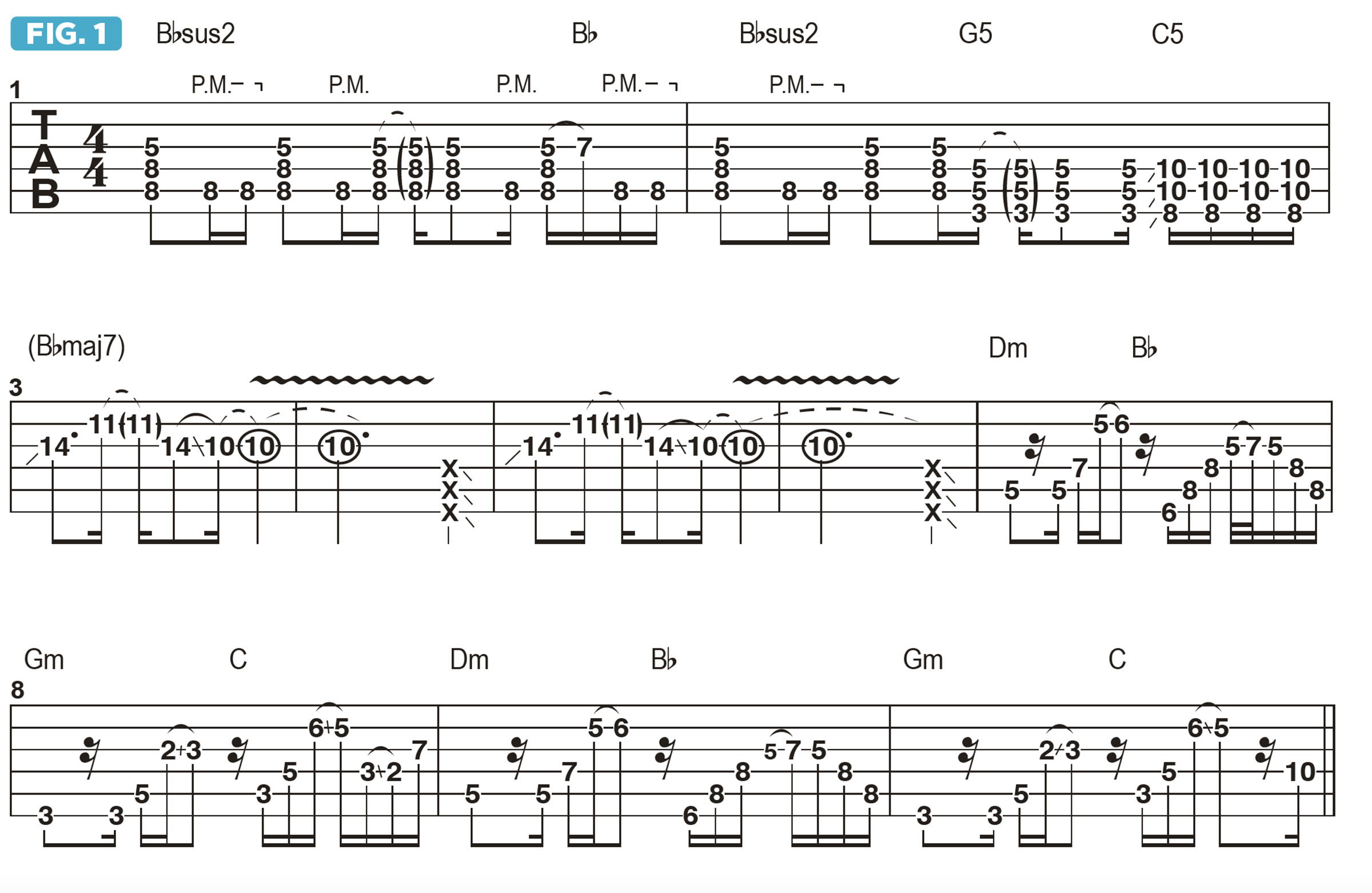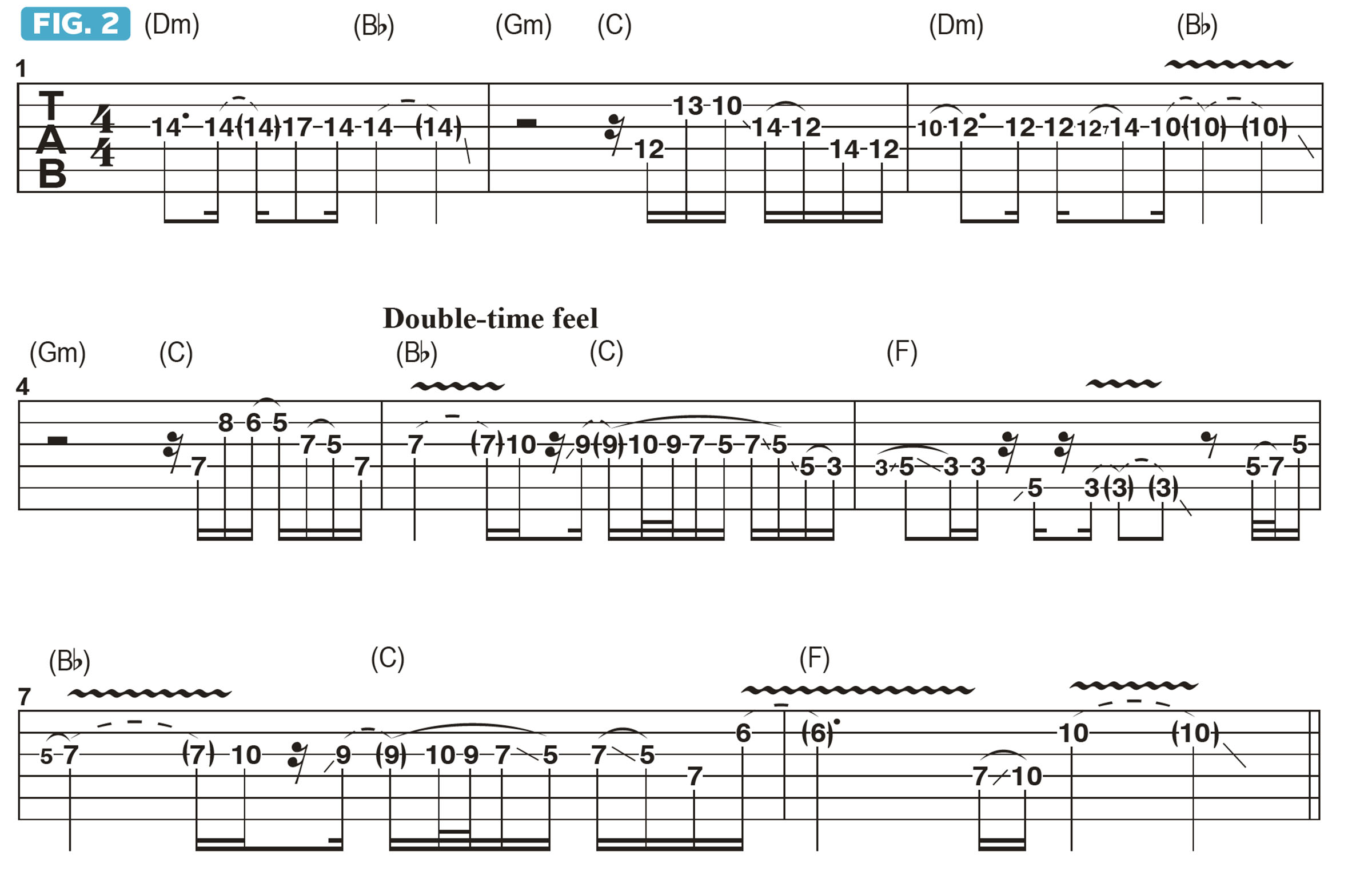“Tell a musical story and develop it in a conversational way while carrying the song forward”: How to create memorable single-note themes in instrumental guitar music

As a composer of instrumental guitar-based music, I’m continually challenged with trying to write single-note melodic themes that tell a musical story and develop it in a conversational way while carrying the song forward.
An effective way to accomplish this goal is to utilize and combine various elements and techniques, such as chordal arpeggios, scales and legato articulations. As an example of how I do this, I’d like to cite the title track from my latest album, Charisma.
Figure 1 illustrates the first 10 bars of the tune, which begins in bar 1 with a fat-sounding Bbsus2 (Bb, C, D) chord, voiced on the A, D and G strings. On beat 4, I hammer-on from C to D on the G string, switching to a Bb major triad (Bb, D, F). In bar 2, I go back to Bbsus2 then follow it with G5 (G, D) and C5 (C, G) power chords.
The tune’s initial melodic theme begins in bar 3, where A and Bb notes are allowed to ring into each other, referencing the sound of Bbmaj7 (Bb, D, F, A). I then slide down to F, the 5th. After playing this fairly simple phrase twice, I move in bar 7 to the tune’s more complex primary theme, which is built from arpeggiated chord shapes.
Across the first half of bar 7, the theme is devised from an open-voiced arpeggiation of Dm (D, F, A) with the 9th (E) added as a color tone. I then take a similar approach to a Bb major chord shape on beats 3 and 4, again adding the 9th (C) as a color tone.
In bar 8, I then arpeggiate Gm (G, Bb, D) in the same manner as I did with Dm, again briefly touching upon the 9th (A). This is followed by an arpeggiation of a C chord (C, E, G) that briefly moves to the sus4 (F), as well as the sus2 (D). Bars 9 and 10 then essentially repeated bars 7 and 8.
I then introduce a new melodic theme over the Dm - Bb - Gm - C chordal arpeggiations, which now repeat in the background. This new theme is shown in Figure 2.
All the latest guitar news, interviews, lessons, reviews, deals and more, direct to your inbox!
In bars 1-4, I chose to rely on relatively sparse lines based primarily on the D minor pentatonic scale (D, F, G, A, C). Bar 4 includes the 2nd/9th, E, which expands the scale to D minor hexatonic (D, E, F, G, A, C). Playing some long, sustained notes here serves to leave “space” for the intricate arpeggiated figures in the accompaniment, which I think creates a nice balance.
Bars 5-8 are played with a double-time feel over a Bb - C - F chord progression, which repeats. These chords represent a shift from the tonal center of Dm to its relative major key of F major.
Figure 1 and Figure 2 comprise what I think of as the two-part verse section of the tune. On the recording, I used drop D tuning (low to high: D, A, D, G, B, E) and voiced the initial Bbsus2 chord on the bottom three strings. Live, I perform the song in standard tuning, as shown here.
When playing through these lines, try to focus on the articulation of the slides, hammer-ons, pull-offs and vibratos, as these techniques are essential in telling the musical story in the right way.



